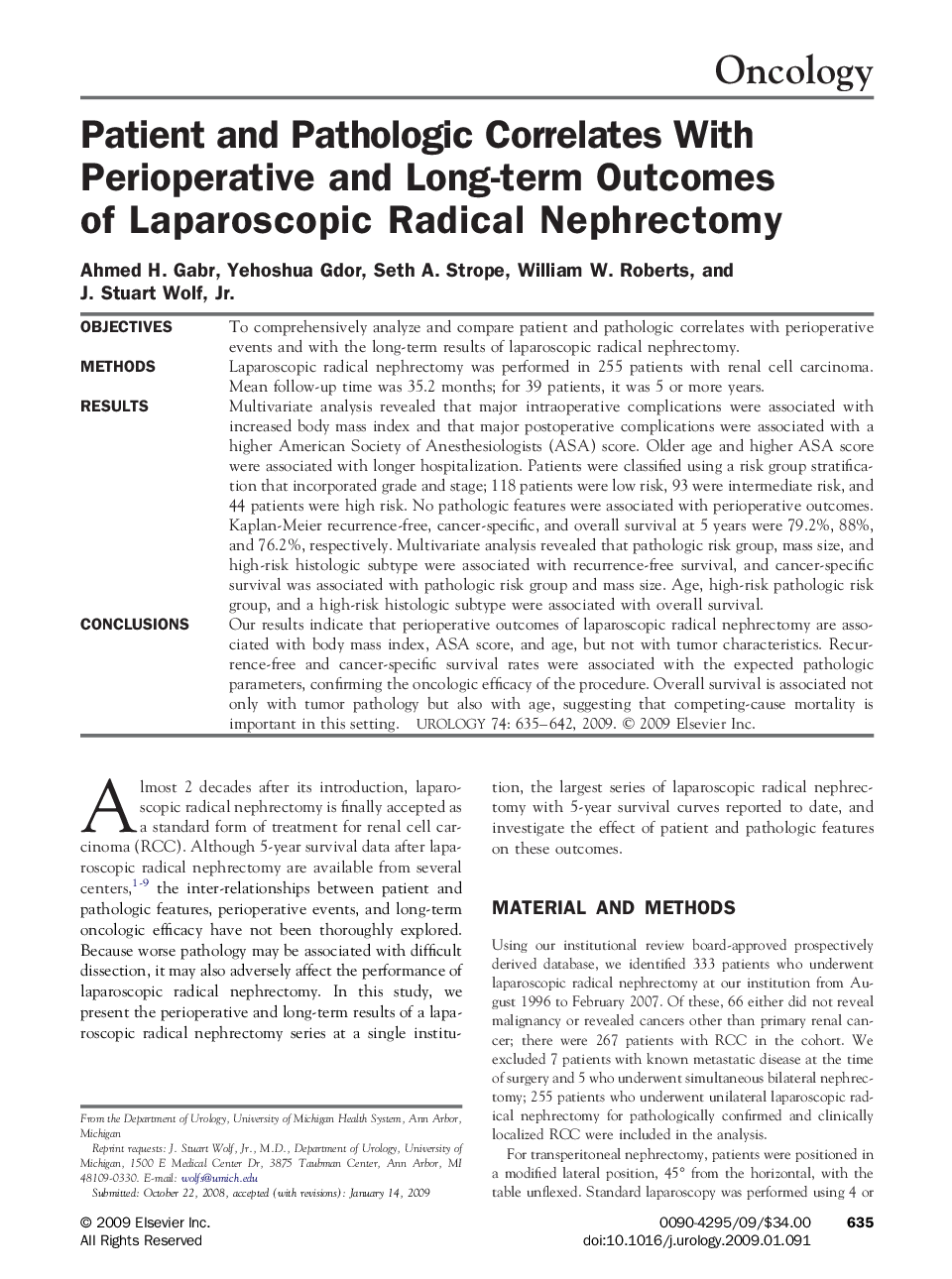| کد مقاله | کد نشریه | سال انتشار | مقاله انگلیسی | نسخه تمام متن |
|---|---|---|---|---|
| 3904075 | 1250386 | 2009 | 6 صفحه PDF | دانلود رایگان |

ObjectivesTo comprehensively analyze and compare patient and pathologic correlates with perioperative events and with the long-term results of laparoscopic radical nephrectomy.MethodsLaparoscopic radical nephrectomy was performed in 255 patients with renal cell carcinoma. Mean follow-up time was 35.2 months; for 39 patients, it was 5 or more years.ResultsMultivariate analysis revealed that major intraoperative complications were associated with increased body mass index and that major postoperative complications were associated with a higher American Society of Anesthesiologists (ASA) score. Older age and higher ASA score were associated with longer hospitalization. Patients were classified using a risk group stratification that incorporated grade and stage; 118 patients were low risk, 93 were intermediate risk, and 44 patients were high risk. No pathologic features were associated with perioperative outcomes. Kaplan-Meier recurrence-free, cancer-specific, and overall survival at 5 years were 79.2%, 88%, and 76.2%, respectively. Multivariate analysis revealed that pathologic risk group, mass size, and high-risk histologic subtype were associated with recurrence-free survival, and cancer-specific survival was associated with pathologic risk group and mass size. Age, high-risk pathologic risk group, and a high-risk histologic subtype were associated with overall survival.ConclusionsOur results indicate that perioperative outcomes of laparoscopic radical nephrectomy are associated with body mass index, ASA score, and age, but not with tumor characteristics. Recurrence-free and cancer-specific survival rates were associated with the expected pathologic parameters, confirming the oncologic efficacy of the procedure. Overall survival is associated not only with tumor pathology but also with age, suggesting that competing-cause mortality is important in this setting.
Journal: Urology - Volume 74, Issue 3, September 2009, Pages 635–640